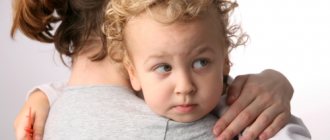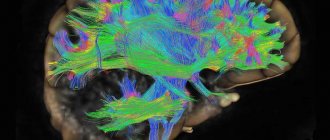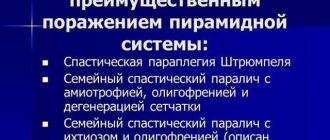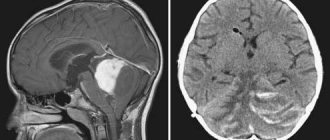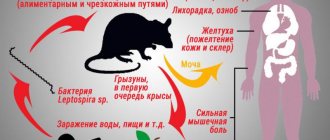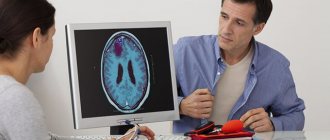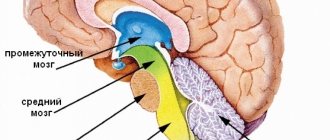This article will not talk about severe mental disorders, such as schizophrenia and a number of other diseases. Let us dwell on deviations with similar symptoms: autism, mental retardation, mental retardation. Their manifestations coincide in some places, and in some cases they diverge greatly. However, upon deep study, they differ and therefore require their own approach, both from parents and teachers. Let's figure it out.
Symptoms of atypical autism
When talking about the symptoms of atypical autism, the first thing to mention is the unnatural ability to connect with other people.
Moreover, this can be either weakly or strongly expressed. It is this sign of atypical autism that is key. During the stable period, patients do not refuse to communicate, but at the same time it is difficult for them to start or maintain any conversation. If a severe form of AA is detected, then the child clearly expresses his desire to isolate himself from everyone and be left alone.
When trying to force a patient to communicate, he may begin to cry, scream, and show aggression. This will cause impulsive motor and emotional reactions.
Also a symptom of atypical autism is:
- coldness, which manifests itself in difficulties in expressing emotions, experiences and feelings;
- specific speech disorder. Characterized by the inability to express one’s own thoughts or formulate what the child himself wants to say. This also makes it difficult to understand common words and phrases;
- psychomotor rigidity.
These are the main symptoms of atypical autism in children.
Autism
This child development disorder appears in children at the age of 2 years, but the diagnosis can be confirmed later - at 3–5 years. Autistic people build their own little world and don’t want to leave it; they like to play completely alone and not communicate with anyone. The connection of such children with the outside world is disrupted, although they are quite healthy physically.
Signs of autism:
- isolation on oneself, avoiding people, not looking for friends;
- prefers to play alone;
- difficulties in verbal (speech, writing) and non-verbal (facial expressions, gestures, touch, assessment of appearance and voice) communication. Speech delay, mutism - random pronunciation of phrases and words;
- social interaction is impaired - lack of emotions for the actions of other people, leaves calls to him unanswered, does not look him in the eye, does not become attached to anyone;
- stereotypical behavior - the presence of certain mandatory rituals, repetition of the same type of movements for a long time, echolalia - repetition of words;
- may show aggression when trying to establish contact, screams;
- any changes taking place around him disturb him.
For some people (1-2 people), autistic children make an exception and can communicate with them.
The exact cause of autism has not been established, although many experts are inclined to believe it is genetic. Some believe that this pathology is caused by organic diseases of the brain.
Autistic people love music. With a mild form of the disorder, they can even surpass their peers in intelligence and study better, but only in some subjects, since their mental development is very selective. In addition, such people very often demonstrate outstanding abilities in certain areas (science, art) and can adapt quite normally in society with the right approach to upbringing, training and special correction.
Electroencephalography of atypical autism
Electroencephalography (EEG) of atypical autism with the comorbid diseases indicated in the previous section in established psychosis gives an increase in the θ rhythm; at the stage of regression in psychosis, a reduction in the α rhythm is characteristic. In catatonia without regression at the third stage (regressive-catatonic psychosis), the θ rhythm was not detected, but the β rhythm was noticeably enhanced. As the patient's condition improved, the α rhythm was restored and θ activity noticeably decreased or disappeared.
Simashkova N.V. came to the conclusion that the EEG correlate of regression and immaturity is expressed by the presence of pronounced rhythmic θ-activity.
Literature
- Bashina V. M.
Autism in childhood. - M.: Medicine, 1999. - 236 p. - Marincheva G. S., Gavrilov V. I.
Mental retardation in hereditary diseases. - M.: Medicine, 1988. - 256 p. - Simashkova N.V., Yakupova L.P.
Atypical autism in children with Down syndrome (Russian) // Psychiatry: journal. - M., 2004. - No. 01 [07]. - P. 7-15. — ISSN 1683-8319. - Bashina V. M., Simashkova N. V., Krasnoperova M. G.
Atypical autism in the light of ICD-10 // Psychiatry and psychopharmacotherapy. - 2005. - No. 5.
General information about the disease
Patients whose brain is affected by a disease such as atypical autism, after the age of 3 years, symptoms of the early childhood form of the disease begin to appear, or they begin to develop its characteristic signs, but not to the full extent (in 3 key areas). The following disorders are considered as the above three areas of diagnosis:
- problems of social interaction;
- specific behavioral disorders;
- communication difficulties.
In accordance with the provisions of the International Classification of Diseases, the deviation under study can have 2 forms. More about them later.
- Onset of the disease. Under such circumstances, the clinical picture shows all the evidence of the presence of early childhood autism, but, characteristically, they first make themselves felt no earlier than at 3 years of age.
- Atypical symptoms. In this case, the possibility of symptoms of the disease appearing earlier than 3 years cannot be ruled out, but the full clinical picture of the “standard” form of the disease is not noted.
The last statement is especially true for patients with obvious mental retardation.
The above classification into 2 groups has important practical significance for specialists in the field of medicine. Often, parents, when communicating with a psychologist, psychiatrist or other specialized specialist about the condition of their children, are interested in what they are suffering from - intellectual underdevelopment or autism.
In the presence of intellectual underdevelopment in its classical sense, extensive signs of the presence of Kanner's syndrome are often noted, while impairments of intellectual development in such patients rarely come to the fore.
In the case of an atypical form of the disease, the situation is exactly the opposite: autistic traits appear in combination with mental retardation.
Practice shows that it is much easier for parents to come to terms with the presence of autism in their children than with the fact that their heirs are mentally retarded.
There are no specific statistics regarding the prevalence of the form of the disease being studied today. Next, you are invited to familiarize yourself with a description of the main signs of the disease and the features of therapeutic care for such patients.
Complications of the disease
If the disease is not detected in time and treatment is not started, the child will experience a number of complications.
Among them:
- complete social isolation;
- constant stress;
- prolonged depression;
- aggression;
- hatred towards others.
The task of parents and specialists is to notice the problem in time and begin treatment.
Causes of atypical autism
This disorder occurs due to failures in the development of parts of the brain. However, it is not known exactly what causes it and there are still no remedies that seriously improve the condition. Atypical autism may accompany severe mental retardation. Sometimes found in people with severe forms of receptive language disorders. This may be complete auditory immunity - aphasia or reduced ability to perceive speech while maintaining physical hearing.
The prevalence of atypical form of autism is expressed in the ratio of 2 cases of the disorder per 10,000 population, and is observed predominantly in males. The reasons causing it are unclear. The etiology indicates that there is information about various complications during pregnancy or childbirth.
Many people with atypical autism experience:
- tremor;
- convulsive phenomena;
- neurological symptoms.
Symptoms
Symptoms of atypical autism usually appear after age three. These include:
- Disorders in establishing social contacts. The severity may vary - some patients seek loneliness, while others want communication with other people, but cannot build a communication process.
- Speech function disorders. Patients do not formulate their thoughts clearly enough, and they understand speech addressed to them literally, that is, they cannot understand words and phrases spoken in a figurative sense.
- Emotional coldness. It is difficult for patients to express feelings, emotions, experiences, so they are perceived by others as indifferent, indifferent, and cold. Many of them lack a sense of empathy. The development of emotional disturbances is due to the difficulty of understanding non-verbal signals.
- Inflexible thinking. The patient experiences fear of any, even minor changes in life or his environment. He strives to live surrounded by familiar things, to perform monotonous, habitual actions.
- Irritability. Due to disorders of the nervous system, patients become overly sensitive to irritating factors. In response, aggression and irritability often occur.
- Sensory impairments. The brain processes and perceives sensory information received (visual, auditory, tactile, olfactory, gustatory) differently than in healthy people, which can manifest itself in different ways, including unusual abilities.
The severity of these symptoms may vary. Often the violations are so invisible that identifying and correctly interpreting them turns out to be a difficult task even for a specialist.
With persistent therapy, in many cases the symptoms of atypical autism without mental retardation do not progress, and sometimes it is possible to ensure that the patient’s mental state practically returns to normal.
Diagnostic criteria
To be diagnosed with atypical autism, the condition must meet the following criteria:
Mental retardation is coded as follows:
- F84.11 Atypical autism with mental retardation (includes mental retardation with autistic features).
- F84.12 Atypical autism without mental retardation (includes atypical childhood psychosis).
ICD-10 identifies 2 main types of atypical autism:
- Onset of the disorder at an atypical age. There are all the criteria for childhood autism, but the disorder begins to manifest itself later than 3 years.
- Autism with atypical symptoms. With this type of disorder, developmental deviations are observed up to 3 years of age, but there is no complete clinical picture of childhood autism (84.0). This is especially true for children with severe mental retardation; such cases are called mental retardation with autistic features.
Differential diagnosis
Unlike atypical autism, Asperger syndrome does not experience delays in speech and cognitive development. Differential diagnosis with schizophrenia is carried out as with childhood autism.
Atypical autism as a syndrome in various diseases
There are two main directions in the study of atypical autism:
- 1) identification of endogenous procedural autism, in the case when autism is isolated in the structure of schizophrenia,
- 2) identification of atypical autism as a syndrome for diseases of different nosological nature[6].
According to N. V. Simashkova’s dissertation on atypical autism in childhood, it includes most of the most severe psychotic forms of autism in the structure of various diseases: malignant childhood type of schizophrenia, Rett syndrome, Down syndrome, Martin-Bell syndrome[7]. In all of these disorders, atypical autism manifests itself throughout the course of the disease as a primary negative disorder[7].
With atypical procedural autism, regressive-catatonic attacks of psychosis may occur, and over time the depth of autism progresses to an extremely severe degree[6].
Atypical autism in Rett syndrome initially deepened from mild/moderate to severe[6]. Then there was a noticeable regression and deepening of autism, and at the last stage, which is sometimes called “pseudo-stationary”, negativism, motor agitation with impulsivity, and motor stereotypies were observed. Disorders at the last stage are difficult to distinguish from catatonic ones[6].
In cases of atypical autism with Martin-Bell syndrome (fragile X syndrome), regressive-catatonic attacks of psychosis were observed at 12-14 months of life[6]. The depth of autism ranges from severe in psychosis to mild/moderate without exacerbations[6]. At the second autistic stage (12-24 months), a severe degree of autism was observed, at the third - even more severe, with loss of self-care and neatness skills, and impaired understanding of spoken speech [6]. The last stage is catatonic and less pronounced, with a combination of substuporous states; All patients had echolalia, some had selective mutism, the depth of autism was within the severe range[6].
In Down syndrome, the onset of atypical autism occurred between the ages of 24 and 36 months in the form of a regressive-catatonic attack of psychosis[6]. The first autistic stage of the attack (1-2 months) was characterized by impaired communication skills, detachment, impoverished emotions, impaired individual development and delayed motor development (in particular, the skill of independent walking)[6]. The second stage (1-2 months) is a complete loss of self-care skills, loss of speech skills, play activity, with the depth of severe autism[6]. The third stage (2-3 months) is the catatonic stage, the change of stuporous states to catatonic excitement, with a severe degree of autism [6]. After 4-7 months from the onset of psychosis, there is a gradual recovery from the psychotic attack with a weakening of the severity of autism[6].
In all cases, three stages of development of atypical autism were observed: 1) autistic 2) regressive 3) catatonic[6].
The clinical picture of psychosis in the described forms of atypical autism was similar, but their structure differed in the same motor stereotypies: in Rett and Martin-Bell syndrome - archaic catatonic brain stem stereotypies, in Down syndrome and atypical procedural autism - subcortical catatonic stereotypies [6].
Diagnostic criteria
To be diagnosed with atypical autism, the condition must meet the following criteria:
Mental retardation is coded as follows:
- F84.11 Atypical autism with mental retardation (includes mental retardation with autistic features).
- F84.12 Atypical autism without mental retardation (includes atypical childhood psychosis).
ICD-10 identifies 2 main types of atypical autism:
- Onset of the disorder at an atypical age. There are all the criteria for childhood autism, but the disorder begins to manifest itself later than 3 years.
- Autism with atypical symptoms. With this type of disorder, developmental deviations are observed up to 3 years of age, but there is no complete clinical picture of childhood autism (84.0). This is especially true for children with severe mental retardation; such cases are called mental retardation with autistic features.
Differential diagnosis
Unlike atypical autism, Asperger syndrome does not experience delays in speech and cognitive development. Differential diagnosis with schizophrenia is carried out as with childhood autism.
About the disease
Atypical autism is a mental disorder that develops in early childhood.
Unlike other similar disorders, it does not appear in the first years of a child’s life and makes itself felt already in preschool and even at an older age. In contrast to the classic form of autism, the atypical variety does not affect the patient’s mental development and does not significantly affect communication abilities. The pathology belongs to the class of psychoneurological diseases and is caused by structural changes in the brain. It is characterized by stereotypical actions of the patient, impaired perception of the surrounding reality, poorly developed imaginative thinking, and lack of social contacts. The disease is often combined with pathologies in the formation of receptive speech and mental retardation. In this regard, there are two types of atypical autism:
- 1. With mental retardation.
- 2. Without her.
In the last century, the described disease was quite rare. However, already now 1 child out of 88 children suffers, while 50 years ago this statistics was more positive - 1 in 10 thousand children. It should be noted that boys are more susceptible to this disease than girls. Most of the research on autism is conducted in the United States.
Why more and more children are suffering from autism is unknown. Doctors can only say that the disease is probably caused not by one factor, but by a combination. Among the possible causes of various forms of autism are mutations in genes, damage to the central nervous system, problems with brain development, hormonal imbalances, viral infections, mercury poisoning, a large number of antibiotics, and chemical intoxication.
However, doctors have not fully figured out which of these causes actually lead to the disease. But the fact is 100% clear that a hereditary predisposition leads to autism. Moreover, during pregnancy, the development of the child’s brain can be affected by infection or severe stress, which ultimately leads to the formation of the described disease.
How is atypical autism with developmental delay treated?
The situation is significantly aggravated if, with atypical autism, the child is also developmentally delayed.
In most cases, in addition to the main symptoms, children have:
- aggressiveness;
- sleep disturbance;
- hyperactivity.
Watch this video on YouTube
If the diagnosis is confirmed, doctors may recommend taking the following medications:
- Naltrexone, Fenfluramine or Haloperidol. These drugs belong to the group of antipsychotics and have the same spectrum of action (they help cope with hyperactivity and aggression in children, and calm the central nervous system).
- "Glycine", "Piracetam", "Encephabol", "Pantogam". Experts call these drugs nootropics. They have a positive effect on higher brain functions.
- Psychotropic drugs. The most popular among them are: “Somax”, “Ripsolept”, “Neuleptil”. Medications help cope with mental illness.
In addition to drug treatment, sessions with a psychologist and other specialized specialists are required.
Predictions for a child
If a child is diagnosed with atypical autism, this does not mean that he will not be able to develop normally. Undoubtedly, some differences in behavior will be noticeable, but despite this, the child can fully study in a standard educational institution and be in ordinary society.
Unfortunately, there is no effective method of eliminating the disease; in this case, only symptomatic therapy is used. In addition, the child will have to be observed by a neurologist for the rest of his life. Thus, a specialist will help to promptly identify a period of exacerbation and prescribe effective treatment.
You can see the visual behavior of children suffering from autism, as well as the comments of teachers, in the video.
Video - Autism: development and socialization
Recommendations for family members of an autistic person
It is quite possible to improve the quality of life with such a pathology if loved ones actively participate in the process of adaptation of the autistic person to society. The main role in these processes is given to parents, who must thoroughly study the characteristics of the disease. You can visit autism centers; there are special schools for children.
Relevant literature will also help, from which the patient’s family will learn all the intricacies of building relationships and living together with such a person.
Here are some more useful tips:
- If an autistic person is prone to running away from home, but cannot find his way back on his own, it is advisable to attach a tag with a phone number and address to his clothes;
- If there is a long trip ahead, it is recommended to take something from the patient’s favorite things, which helps him calm down;
- Avoid long lines, as autistic people often start to panic in them;
- You should not violate the patient’s personal space; he should have his own room, where he will arrange things and objects at his own discretion, while household members are not allowed to touch, move, rearrange, or rearrange anything.
The family should accept that their loved one is special, so they must learn to live taking this circumstance into account.
Is it possible to get disability
According to current legislation, an adult with autism is entitled to disability. For this:
- You need to go to the clinic at your place of registration to confirm the diagnosis. You can contact a psychiatrist or neurologist.
- After the examination, the doctor will issue a referral for a medical examination and give recommendations regarding additional examinations and specialists who will need to be examined.
- When the examination is completed, all results are transferred to the doctor (psychologist, psychiatrist) who issued the appropriate referral. It is he who will prepare the documentation for the commission.
- All that remains is to come to the ITU with the finalized documents.
Article on the topic: How to apply for disability due to autism
When is disability issued?
Registration of disability for atypical autism is a separate issue that requires careful consideration. If a child does not have mental disabilities, then achieving a correct diagnosis is quite difficult. But parents still need to address this issue. When registering a disability, the state provides many benefits and social benefits for a child.
In order to get to the MSEC commission, you need to go through a number of specialists. Among them:
- neurologist;
- speech therapist;
- ENT.
Examinations will also be required:
- EEG;
- blood and urine tests.
With all the conclusions, you need to contact a psychiatrist, who will issue a disability card and give an opinion for the commission.
With the classic form of autism, it is a little easier to apply for disability than with the atypical form.
Pathogenesis
The pathophysiological basis of the disease is brain damage. The provoking mechanism for the onset of autism is exposure to a damaging factor at a certain age, coinciding with a critical period in the development of body systems, especially the central nervous system. The ontogeny of the nervous system is a sequence of crises that ensure qualitative changes in mental and physiological processes. These periods are characterized by increased sensitivity to the effects of adverse factors. The onset of severe forms of atypical autism occurs at the age of 16-18 months and coincides with important structural ontogenetic processes in the brain, the peak of natural neuronal death in the visual cortex.
Speech development of children with autism
A sign of autism is also considered a delay in speech development or its complete absence. Two different patterns of manifestation are possible here. In Kanner syndrome, when autism manifests itself in the classical form, early speech development is no different from the norm, and sometimes even exceeds the pace of peers. Around the age of 1.5-2 years, a sharp regression occurs, and the child loses all acquired speech skills and either stops speaking altogether (mutism), replacing the dictionary with sounds and words that only he understands, or speaks with stereotypical phrases collected from advertising, cartoons, speeches of others.
He uses his entire active vocabulary inappropriately and often combines onomatopoeia with normally formed statements. The process of understanding the speech of others is not impaired, but there is no reaction to it, which is why he does not respond to his name. With the loss of speech, talking in a dream and with oneself is also observed.
In atypical autistic children and children with Asperger syndrome (the same signs may be present in classic cases), speech may develop more or less normally, but with a lag behind the age norm and some features. Most often observed:
- tongue-tied;
- physiological echolalia (repetition of the opponent’s phrase);
- poverty of vocabulary;
- delayed formation of “I” (the child talks about himself in the 3rd person);
- extended or accelerated pronunciation, chanting, other prosody disorders;
- incorrect use of the main parts of speech and their forms;
- a tendency towards autonomous speech (speech by itself) and underdeveloped dialogue.
Each child with autism may have their own speech “trick.” Some people’s speech is replete with autocommands and autodialogues, without the communicative orientation of what is being presented. Others may experience juggling with negative words, neologisms, phraseological units without understanding them, various word creation in an unusual form, etc. They have a special passion for rhyming. Approximately 90% of children with ASD do not understand step-by-step verbal instructions and generally do not perceive spoken speech well, although their hearing is completely intact.
Almost all autistic people use a telegraphic style of presentation and speech cliches in their speech. The more affective the situation, the more clearly the clumsiness of speaking is expressed. Naturally, speech disorders depend on the severity of the disease.
If we talk about very young infants, then their EDA (early childhood autism) may manifest itself in the absence of humming, babbling, and onomatopoeia
With their delayed development, there is clearly no communicative orientation - the child is not trying to attract the attention of adults. In the case when human speech in its usual understanding does not develop at all, most often it develops its own language - the so-called “bird” language.
The kid is constantly chirping something in his “gibberish-parrot” and is clearly not going to perceive ordinary words.
In mild cases, the child masters speech, but its inverted and coherent form suffers, many agrammatisms are revealed, and sound pronunciation is disrupted. Spontaneous speech in everyday life and according to the situation does not develop independently - this needs to be taught long and hard.
Treatment
Methods for effective treatment of atypical autism have not been developed to date. Therapy is aimed at eliminating the symptoms of the disease and social adaptation of patients. It is developed individually for each child and is carried out most of the day over a long period of time.
It is important for children with atypical autism to provide conditions for social adaptation.
The only correct treatment tactics for atypical mental development disorder currently does not exist. Treatment is symptomatic, aimed at reducing the manifestation of the main signs of the disease. Successfully carried out therapeutic intervention and elimination of obvious symptoms of pathology leads to the fact that the child feels an improvement in well-being.
The therapeutic approach to each person must be individual, with a lot of time and effort for the little patient. The human factor is of paramount importance, that is, people who care for a person with certain mental disorders must understand what a given child needs and have a clear command of various medical techniques.
It is by relying on his experience and knowledge that the specialist, through trial and error, finds an individual approach to the patient and determines the effectiveness of the therapeutic intervention based on improvements in his condition.
Treatment is planned for a long period of time; this is a necessary measure even with a mild form of the disease. Classes using specific methods cannot be superfluous for such a patient, that is, with each therapy session they only bring him benefit. It is impossible to completely cure atypical mental development disorder, but it is quite possible to improve the quality of life and well-being of the patient, and the coordinated work of a specialized specialist and parents should help with this.
There are no preventive measures for this disease among children; its nature remains not fully understood. But timely diagnosis and effective treatment at the very beginning of the disease significantly increases the possibility of socialization of the little patient in society.
All methods and rehabilitation programs were developed in America. Regardless of what signs of autism are present in 3-year-old children, all ways to eliminate the disease are based on active communication and games. If the form is mild, then parents, if they take the issue seriously, will most likely be able to make the child a social person.
In severe forms of the disease, problems may appear, but this is associated with the development of mental retardation and other side diseases. There are few doctors in Russia who specifically treat autistic children. But you still need to find a psychiatrist. Choose your kindergarten and school carefully. With children, behavior correction should be carried out absolutely everywhere: at the doctor, at home, in all places that the child visits. Parents need to show love and care.
To reduce the manifestations of autism in children 3 years old, you need to follow the following recommendations:
- The child needs to be taught the necessary skills for later life. For example, to teach you to brush your teeth yourself, you should often repeat this in front of him and with him. Even if the child has already learned this, repeated “lessons” should be carried out regularly.
- The child's daily routine should be clear. He himself will not violate it, and therefore parents must also comply with it. You cannot break the rules, otherwise the child will show aggression. Attempts to change the situation or habits of the baby will also lead to his rebellion.
- Try to communicate with your child more often. Spend a lot of time with him. If the baby does not react, then do not be offended. Repeat persistently the sentences, his name. There is no need to shout, scold or punish. If autism was discovered at an early age, you can hold him in your arms more often. At this age, he will not protest much, and by the age of 3 he will get used to emotional contact with his parents. If the case is difficult, then cards can be used instead of oral speech.
- An autistic child should not be tired. You need to take a break between games or activities. At the same time, at such moments, leave him alone. Play sports with your child to improve his physical fitness.
- Don't suppress initiative. There is no need to rush or force you to do something. You need to have a lot of patience to raise a child. An autistic person should perceive home as a place where he is comfortable and calm. The same should apply to parents. The important task of mom and dad is to make sure that the baby is not afraid of them and notices them.
- The child needs to be taken outside more often, and be sure to be taken to kindergarten and school. At first, the baby will resist, but after some time he will still understand that he can talk to others, play with them, and this is also exciting.
When the doctor has tested for autism in 3-year-old children, interviewed the parents and made a diagnosis, treatment must be started immediately.
READ MORE: Charcot's disease - Neural amyotrophy Charcot Marie Tuta: symptoms and treatment, ICD code 10
Autism is rarely treated with medication because drugs will not help. They can be used when some symptoms become too dangerous, for example, a child begins to show aggression towards someone, but it is impossible to calm him down. The same applies to physical activity, depression and some obsessive desires.
Medicines are also prescribed for vitamin deficiencies and problems with the gastrointestinal tract.
Autism symptoms can be alleviated with a special diet. To date, many studies have confirmed that the disease is associated with metabolic disorders. These children have been shown to be hypersensitive to cereal proteins (gluten) and milk (casein), so a gluten-free and casein-free diet is recommended for autism.
Remember that you do not need to force your child to eat something specific. If he refuses, then offer something else.
Regardless of diet, autistic people may have problems with vitamins. Often such people have a severe deficiency of most nutrients. There are also problems with the production of certain hormones and enzymes. Even with a normal diet, there can be a high concentration of heavy metals in the body.
In each individual case of the disease, it is necessary to select specific behavioral and drug treatment. Before taking any medications, you need to 100% confirm the diagnosis. You should also ask your doctor what kind of disease autism is. Symptoms on which treatment depends, manifestations - a specialist must pay attention to all this. Therefore, talk to him, maybe the chosen doctor is not the best candidate for treating your child.
When taking medications, you need to regularly monitor whether they are effective or not, since not all children are suitable for the same medicine.
https://www.youtube.com/watch?v=subscribe_widget
There are no specific treatments for this disorder. The technique is selected individually for each patient and must take into account his characteristics, the form of the disease and development prognosis. There is no drug treatment for atypical autism. Certain medications can be used to eliminate such manifestations of the disease as aggression and auto-aggression, apathy, depression, obsessive-compulsive syndrome, increased excitability, etc.
A safe way to reduce the manifestations of the disease is diet. A special diet prescribed by the attending physician requires limiting the use of:
- sugar and sugar-containing products;
- fast food;
- milk and products containing gluten (barley, rye, wheat);
- canned food and food with dyes.
Atypical Autism – Signs and Symptoms
Diagnosis of childhood autism has very clear developed criteria. The concept of “atypical autism” means that the child has autism spectrum disorders, but either they appeared later than 3 years of age, or they are partially present.
The classic type of autism in children is pronounced already in the first year of life. Such a baby does not roar, does not react to the presence of a significant adult, and has no reaction to toys.
Diagnosing atypical autism is more difficult than classic autism, since here the signs are more blurred and even close people, up to a certain point, can attribute many of its manifestations to characteristics of temperament or development. Signs of atypical autism in children:
Poor interaction, emotional detachment. The child does not show initiative in communication, does not look at the interlocutor, does not respond to names or addresses. In relation to close people he is indifferent. Shows no interest in strangers. Speech impairment. He speaks in cliches, repeats the last words he heard, says something that does not apply to the current situation. Lack of imagination, role-playing, lack of need for communication. Difficulties in developing self-care skills. Repetitive actions. The child has a certain ritual, which he resorts to during times of discomfort, instead of games, for constant pastime. The daily routine is established. Any violation causes discomfort, aggression, hysteria.
It should be understood that describing all possible symptoms of atypical autism is as unrealistic as fitting all patients to a certain criterion. The above-described signs can be combined in a variety of combinations and may not be completely present. Their severity may vary. Sometimes diagnostic errors go beyond psychological pathologies.
For example. The girl was diagnosed with cerebral palsy when she was 4 years old. Her gait was extremely unsteady. It seemed that the child did not control his body. When diagnosed by specialists, it turned out that the girl suffered from impaired perception of space, decreased sensory sensitivity, and lack of emotional contact with people. To put it simply, her brain incorrectly estimated the distance to objects and the floor. She walked like a sailor, ignoring obstacles such as furniture or people. At the same time, self-care skills were normal, the lag in cognitive development was insignificant. Diagnosed with atypical autism.
Therapy and training
This section is translated from Autism. (edit | history)
During special classes for preschoolers at the Neuropsychiatric Institute of the University of California: an autistic child points at aquarium fish. Researchers are trying to evaluate the effects of intensive training that emphasizes joint attention on language development.[1]
The main goals of therapy are to reduce autism-associated deficits and tension in the family, improve the quality of life and functional independence of the autistic person. There is no single optimal treatment method; it is usually selected individually[11]. Methodological errors made when conducting studies of different therapeutic approaches do not allow us to speak with confidence about the success of a particular concept[12].
Some improvements have been observed with many psychosocial interventions; this suggests that any help is better than no help. However, the methodology of systematic reviews remains poor, the clinical results of interventions are largely unclear, and there is insufficient data on the comparative effectiveness of approaches[13].
Intensive, long-term special education and behavioral therapy programs early in life can help a child develop self-help skills, communication skills, and work skills[11], often increasing level of functioning, and reducing the severity of symptoms and maladaptive behavior[14].
Claims that support is especially important around age three are not supported by evidence[15]. Despite the widespread use of a gluten-free diet as an alternative treatment for people with autism, there is no evidence that a gluten-free diet is beneficial in treating autism symptoms[16][17][18].
Available approaches include applied behavior analysis, develompental models, structured training (TEACCH), speech therapy, social skills training, and occupational therapy[11].
Within the framework of applied behavior analysis, several approaches have been identified specifically for children with autism and autism spectrum disorders: discrete trial training, pivotal response treatment, spontaneous learning and applied speech behavior ( English applied verbal behavior)[19]. To some extent, children benefit from such educational interventions: intensive use of applied behavior analysis has improved the overall level of functioning of preschool children[20], and has been well established as a method for increasing the intellectual performance of young children[14].
Neuropsychological findings are often poorly communicated to teachers, creating a gap between recommendations and the nature of teaching[2]. It is unknown whether programs for children lead to significant improvements once they reach adulthood,[14] and the limited research on the effectiveness of adult community-based programs suggests mixed results.[21]
To control autistic symptoms when behavioral intervention is unsuccessful, when manifestations of the disorder do not allow the child to integrate into the school community or family, they resort to a wide range of medications[3][22]. Thus, in the United States, more than half of children with autism spectrum disorders receive psychotropic or anticonvulsant medications, with antidepressants, stimulants, and antipsychotics most often prescribed[23]. With the exception of the latter,[24] the effectiveness and safety of the use of various drugs for autism spectrum disorders is extremely poorly reflected in high-quality scientific publications[25]. In a person with this disorder, medications may cause atypical reactions or adverse side effects[11], and no known medications have been shown to alleviate communication and social problems central to autism[26].
Due to communication difficulties, autistic children are often unable to communicate the side effects of psychotropic medications, and the discomfort they experience as a result of these side effects may manifest as an increase in the very pathological behavior that is being treated. Studies have shown a high risk of developing extrapyramidal side effects of antipsychotics in autistic children, in particular tardive dyskinesia. Neuroleptics are not advisable to use in autism, with the exception of only the most severe cases of uncontrolled behavior - with a pronounced tendency to self-harm and aggressiveness, resistant to other interventions (in cases where behavioral therapy, correction of existing neurological and somatic disorders, mood stabilizers and antidepressants were ineffective).[ 27]
Despite the availability of a wide range of alternative approaches and techniques, few of them have been the subject of scientific research[5][28][29].
Outcome data from such approaches are rarely linked to quality of life measures, and many programs use measures that lack predictive validity and are far from reality[4].
Organizations offering services to parents of autistic people, when choosing methods, seem to be guided primarily not by scientific data, but by the marketing offers of program authors, the availability of training for their employees, and the requests of parents[30]. Although most alternative methods, such as the use of melatonin, cause only minor side effects,[31] some may pose a risk to the baby. Thus, a 2008 study showed that, compared with their peers, autistic boys on a casein-free diet have thinner bones[32].
In 2005, inadequately administered chelation killed a five-year-old autistic child[33].
The ketogenic diet has been shown to have good therapeutic potential due to its neuroprotective and anti-inflammatory properties [34][35]. The diet can be especially effective [ source not specified 68 days
] in brain glucose hypometabolism[36]. As of 2020, the number and quality of research is not enough to recommend the diet to all patients.
Treatment costs for autism are high; indirect losses are even higher. According to a US study, the average lifetime cost for a person with autism born in 2000 would be $3.2 million in 2003 purchasing power, with about 10% spent on medical care and 30% on additional education and care, and losses in economic productivity will account for the remaining 60%[37].
Programs funded by grants and donations often do not address the needs of the individual child, and parents' unreimbursed out-of-pocket costs for medications and other treatments can place families in financial strain.[38] A 2008 study in the United States noted that the average loss of annual income of a family with an autistic child was 14%[39], and another related publication found that the challenge of caring for a child with autistic disorder can have a significant impact at the parent's work[40].
Upon reaching adulthood, issues of community care, acquiring a profession and finding work, sexual relations, the use of social skills and estate planning come to the fore[29].
Other disorders
Gillberg (1998) noted that other disorders should be considered in the differential diagnosis of Asperger syndrome. Several epidemiological studies suggest that some mental disorders have a relatively high comorbidity rate with Asperger syndrome. For example, an epidemiological study of anorexia nervosa found that 6 out of 51 cases were preceded by Asperger's syndrome in early life. In another study, 3 of 14 children with attention, motor, and perception disorders showed signs of Asperger syndrome. Similar results were obtained in a study of children with Asperger syndrome: one in five school-age children suffering from this syndrome also had Tourette syndrome.
Diagnostics
The diagnosis of “atypical autism” is confirmed by a psychiatrist. In addition to him, a pediatrician, neurologist, and clinical psychologist take part in the process of examining the patient. A number of criteria are used for diagnosis: developmental abnormality of the dysontogenesis type, manifestation without reference to an early age, symptoms of qualitative disorders of social interaction and/or stereotypy, lack of necessary criteria for childhood autism. Patient examination includes the following methods:
Clinical conversation. Informative clinical and anamnestic data is provided by parents, and when the patient is in a medical institution, by staff. A conversation with the patient is possible in rare cases, after several meetings with the doctor (after getting used to it). The speech is marked by repetitions of phrases, echolalia, monosyllabic answers, stories about oneself in the third person (“Misha went to bed”, “he doesn’t want to eat”). Observation. Analysis of immediate emotional and behavioral reactions is the main way to obtain diagnostic information. At the first meeting, patients often do not make contact and try to avoid contact with the doctor (they cry, show aggression). Later, more diverse manifestations of the disease are discovered: stereotypies, coldness of emotions, lack of interest in social interaction. Cognitive research
When diagnosing, it is important to differentiate autism of the psychotic type from autism with mental retardation. The study of the cognitive sphere is complicated by disturbances in interpersonal interactions and speech development
The psychologist uses non-verbal techniques - collecting pyramids, composing individual pictures and plot stories, Kos cubes, Raven's progressive matrices test. EEG. Electroencephalography data confirms the likelihood of the diagnosis. With stable psychosis, an increase in the theta rhythm is determined, at the regressive stage - a reduction in the alpha rhythm, with catatonic-regressive psychosis, the theta rhythm is not detected, the beta rhythm increases. During remission, the alpha rhythm is restored, theta activity decreases or completely disappears.
Symptoms
Symptoms of this disease in children in most cases appear no earlier than three years, which leads to delayed diagnosis. The initial signs of the development of such a disease are characterized by the following behavior:
- the patient prefers loneliness or has problems communicating with people;
- disturbance of the emotional sphere - the patient cannot correctly express his feelings, show emotions and react correctly to certain events;
- irritability, sudden mood swings.
Such symptoms cannot be called specific, so quite often at this stage of the development of the disease, it is difficult even for a specialist to make a correct diagnosis.
As the pathological process worsens, the clinical picture may include the following signs:
- violation of speech function - the patient understands the speech addressed to him, but cannot clearly formulate and express a thought;
- the patient cannot correctly interpret words and phrases that were spoken in a figurative sense;
- the patient may fall into panic when he is in an unfamiliar environment or with unfamiliar people;
- sensory impairments - a person may incorrectly perceive the information that he receives through visual and auditory functions, and there may also be problems with the sense of smell.
If a patient has a progressive form of autism with mental retardation, the clinical picture may be supplemented by the following symptoms:
- speech disorders;
- a person cannot independently perform household tasks;
- inability to correctly formulate and express thoughts;
- mental retardation, signs of inappropriate behavior.
Often, against the background of such a course of the pathological process, physiological disturbances may also be present.
Only a doctor can correctly interpret the symptoms and make a diagnosis. The task of parents is to promptly seek medical help in case of clinical pictures described above.
Features and symptoms of the disease
Description of autism
The pathological process affects three areas of the baby’s development:
- Social adaptation.
- Development of correct speech.
- The creative side of thinking.
The main feature that characterizes the atypical form of pathology concerns directly the interaction plan in society. There are two clear examples of this trait:
- A complete lack of desire to communicate with other people.
- An active desire to communicate, but with unsuccessful communication due to certain mental characteristics.
An atypical mental disorder primarily affects speech development, so very often it is difficult for others to understand the speech of a patient with an atypical form of autism.
Parents can learn about what autism is from the commentary of an experienced specialist.
Video - What is autism?
Emotional development also suffers. This form of pathology is characterized by a complete absence of nonverbal communication. That is, the patient from the outside seems indifferent and indifferent to everything around him.
It should be noted that children suffering from atypical autism are characterized by a high level of irritability, they perceive the surrounding reality with difficulty and cannot think flexibly.
Despite the various forms of manifestation of atypical autism, common symptoms are distinguished:
- impaired communication skills (no eye contact during communication);
- reluctance to have social contacts and make friends with peers;
- new verbal constructions are learned with great difficulty, and previously memorized verbal elements are quickly forgotten;
- there are pronounced problems in interaction with other people;
- all information that comes to the patient is perceived literally, without distinction between semantic and figurative;
- non-verbal communication (manifestation of emotions) is also perceived very literally, and sometimes without understanding at all;
- lack of ability to express emotional states;
- complete indifference to the outside world;
- habitual monotonous lifestyle;
- self-immersion;
- spending a long time on an incomprehensible task (laying out and rearranging any objects) without reacting to the external environment;
- an atypical reaction to something new, especially if it is a sound or smell.
The first signs of autism
Differences between the classical form and the atypical
There are several indicators that distinguish the two forms of autism:
- the atypical form is characterized by isolation and loneliness, on the contrary, classic autism manifests itself in the desire to be in society, but with a lack of knowledge of building the right relationships;
- classic autism is based on communication more through non-verbal communication, while patients with an atypical form exclude the understanding of gestures and emotions;
- It is characteristic that the usual form of autism is accompanied by intellectual underdevelopment, while the atypical form is characterized by the addition of atypical symptoms.
Recommendations! Depending on what form of pathological condition is identified in the child, a therapeutic course with individual additional classes will be based.
Notes
- ↑
- ↑
- ↑
- ↑
- ↑
- ↑
- ↑
- ↑ Yu. V. Popov, V. D. Vid.
Modern clinical psychiatry. - M.: Expert Bureau-M, 1997. - P. 390-391. — 496 p. — ISBN 5-86065-32-9. - ↑ Psychiatry / ed. N. G. Neznanov, Yu. A. Aleksandrovsky, L. M. Bardenshtein, V. D. Vida, V. N. Krasnov, Yu. V. Popov. - M.: GEOTAR-Media, 2009. - P. 406-407. — 512 s. — (Series “Clinical Guidelines”). — ISBN 978-5-9704-1297-8.
- ↑
- ↑
- Leach D.
Applied behavior analysis. Methods for inclusion of students with ASD. - M.: Operant, 2020. - Lack of research on drug treatments:
- Pharmacotherapy in neurology and psychiatry: / Ed. S. D. Enna and J. T. Coyle. - Moscow: LLC: "Medical Information Agency", 2007. - 800 pp.: ill. With. — 4000 copies. — ISBN 5-89481-501-0.
- Lack of support for interventions:
- ↑
Atypical autism with and without mental retardation
Conventionally, atypical autism in children can be divided into pathology with and without mental retardation. With atypical autism coupled with ID, we have a less positive picture of the development of events in the future. Learning will be difficult, as will integration into society. This is a low-functioning group of autistic people. They tend to exhibit more pronounced symptoms of classic ASD.
As a rule, such children have a weak tendency to acquire vocabulary, primitive thinking, poor imitation, poor memory, attention disorder, lack of self-care skills, difficulties in contact even with loved ones, stereotypies, fears, aggression. The stronger the intellectual impairment, the brighter the symptoms. In fact, it is mental deviations that come forward here. The dynamics are weakly positive or negative.
Atypical autism without mental retardation is characterized by higher functioning. Speech and cognitive impairment are minimal, as are behavioral problems. Very often, thinking is not severely disturbed or is on the border of the norm, but emotional reactions and weak volitional regulation come to the fore. A negative reaction to society and communication is possible.
Often, with atypical autism in children, there is a sharp transition from a “normal” state to an unusual one, i.e. Until the age of 3-4 years, the child behaved quite adequately, and the oddities were not so obvious, but after that, literally within a month or two, drastic changes occur. A child can become hysterical out of the blue, refuse usual food and clothing, isolation, aggression, impulsiveness, anxiety appear, and sleep deteriorates. He refuses to maintain usual contacts and behaves worse in the garden. Many mothers noted that even their facial expression changed - it became mimic. This chain of events occurred in children with atypical autism without MR.
Therapeutic treatment of children without mental retardation
Treatment of atypical autism without mental retardation takes place under the strict supervision of a psychologist and neurologist. There are no medications against this pathology.
The task of specialists is psychological correction of the child’s behavior.
What are the treatment methods? In each specific case, doctors develop an individual program and look for a special approach to the baby.
What a treatment regimen may include:
- visiting specialized rehabilitation centers;
- daily classes with specialists;
- visiting clubs to develop fine motor skills (drawing, modeling, origami, beading);
- music lessons (for example, piano lessons);
- hippotherapy;
- dolphin therapy.
Treatment should not only be carried out by doctors. Parents play a major role in the child’s social adaptation in society and the adjustment of his behavior.
General information about autism
Main article: Autism
Activation of different brain regions during motor tasks by control group participants (blue) and autistic participants (yellow). Illustration from Powell et al., 2004.
To make a diagnosis of autism, a consultation is usually carried out by a pediatrician. Then, if necessary, the help of a psychiatrist is involved, who makes a diagnosis and assesses the patient’s condition, his communication and cognitive abilities. A neuropsychologist may be used to assess behavior and cognitive abilities. Currently, there are no reliable biological markers for identifying and screening children with autism.
The main characteristic that distinguishes autism from other developmental disorders is social deficits.
The quality of life of children with autism remains poor, with most lacking meaningful social relationships, social support, future employment opportunities or self-determination, despite advances in early detection, intensive intervention and therapeutic approaches. Progress in identifying the causes of autism is slow, it is not yet known for certain what causes it and there are no remedies that would correct autism disorders.

